Similar presentations:
Electronic government infrastructure (Korean Case)
1.
ICT Week Uzbekistan 2016-1-
1/50
2.
Who Am I?KWON Yeong-il(Victor) , Ph.D.
NIA Global Center, e-Government Academy
National Information Society Agency(NIA)
kyi@nia.or.kr , +82-10-4751-01259
Head of NIA Global Center and e-Government
Academy, NIA
Executive Director of Information Architecture
Division, Smart Network Division(2010~2014)
Chief of Public Information Support Center(PISC)
and e-Government Standard
Framework(eGovFrame) Center (2010~2014)
Director of Green IT/e-Government Technology,
NIA, Korea
Ph.D in IT Policy & Management, Soongsil
University(2015) and M.D in KAIST, Korea(1998)
-2-
2/50
3.
Understanding of e-Governmente-Government Policy in Korea
III
Best Practices and Key Success Factor
IV Open Government Issues
V
Future Direction of e-Government
-3-
3/50
4.
Role of ICT in public administration-4-
4/50
5.
Public administration before e-GovernmentMany different forms and repetitive tasks
-5-
5/50
6.
e-Government in the public servicesEfficient, Transparent Government
High Speed
Networks
Local
Government
Central
Government
Information
Sharing
Electronic Document
Interchange System
Government Portal Site
Citizens
Entrepreneurs
Internet Access to Public Services
-6-
6/50
7.
Connected Society for the HappinessSNS
Road
Telephone
Internet
-7-
7/50
8.
Mobile Phones in GlobalMobile-cellular subscriptions per 100 inhabitants,
2001-2015
140
120.6
Developed
120
Per 100 inhabitants
World
100
96.8
Developing
91.8
80
60
40
20
0
2001
2002
2003
2004
2005
2006
2007
2008
The developed/developing country classifications are based on the UN M49, see:
http://www.itu.int/en/ITU-D/Statistics/Pages/definitions/regions.aspx.html
Note: * Estimate
-8-
8/50
2009
2010
2011
2012
2013
2014
2015*
9.
Mobile-broadband PenetrationActive mobile-broadband subscriptions per 100 inhabitants, 2007-2015
Per 100 inhabitants
100
90
Developed
80
World
86.7
Developing
70
60
47.2
50
40
30
39.1
20
10
0
2007
2008
2009
2010
2011
2012
2013
2014
The developed/developing country classifications are based on the UN M49, see: http://www.itu.int/en/ITU-D/Statistics/Pages/definitions/regions.aspx.html
Note: * Estimate
Source: ITU World Telecommunication /ICT Indicators database
-9-
9/50
2015*
10.
Impact of ICT on Economic Growth by Types of TechnologyHigh Income Economoes
Low and Middle Income Economies
1,38
1,12
0,81
0,73
1,12
0,77
0,6
0,43
Fixed Phones
Mobile Phones
Internet
UNDESA, Qiang (2009)
- 10 -
10/50
Broadband
11.
Relation between EGDI and national income (GNI per capita)*EGDI : E-Government Development Index (UN e-Government Survey 2014)
- 11 -
11/50
12.
National Competitiveness and ICT CapacitySource: Drawn by the author based on ICT Development Index of ITU (2015) and
Global Competitiveness Index of WEF (2015).
- 12 12/50
-
13.
Concept of e-Governmente-Government Policy in Korea
III
Best Practices and Key Success Factor
IV Open Government Issues
V
Future Direction of e-Government
- 13 -
13/50
14.
A variety of e-Government Definitions- 14 -
14/50
15.
Definition of e-Governmente-Government is generally defined as being “the use of digital technologies
to transform government operations in order to improve effectiveness,
efficiency, and service delivery”
(Source: Mark A. Forman, “Using it to transform the effectiveness and efficiency of government”)
e–Government is:
• The transformation of public sector in an internal and external relationships
• Through network-enable operations, IT and communications
• In order to improve:
1) Government service delivery
2) Citizen participation
3) Internal government operations
* Source: GARTNER
• Government-driven
Paradigm Shift
Customer-driven
• Get-in, Get-out
Enduring Relationship
• Distant Customer Contact
Immediate Customer Service
• Information Center
Intelligent Reporter
• Process-based
Competency-based
Shared Service
• Territorial
- 15 -
15/50
* Source: Deloitte
16.
ICT Development Journey in Korea- 16 -
16/50
17.
Market Failure in ICT Infrastructure(Broadband)D
S1
S2
Market R&D, Fee
Failure Subsidies
P1
P2
Q1
- 17 -
17/50
Q2
Network
Externality
18.
Market Failure and the Role of Government- 18 -
18/50
19.
Set-off Scheme of Network FareThe government secured the investment needed for infrastructure construction, and
gave it to service providers (KT, Dacom) to overcome market failure
• Service providers could accumulate the government investment as the offset deposit,
and can offset it with the actual charge of subscribed agencies when the project of the year is
completed. (Once settlement is completed, Network facilities belong to service providers)
Governmental
Investment
Facility Investment First, Use Fee Payback Later
Bulk Rate DC
Proportion covered
by the public
organization
uses the service
Use
fee
Public network fee
Proportion covered
by the government
Contract fee
Reserves as
setoff deposit
Set off fare
(Contract fee – use fee)
※ Fee structure of the national network
• Contract fee: Fee determined by the contract between government and service providers. 40% is discounted on an average compared
with regular public network.
• Use fee: The amount paid by agencies like the government in return for the use of communication service.
• Offset fee: A subsidy from the government to individual use agency, which is offset by the national network investment.
- 19 -
19/50
20.
Broadband Internet: Current StatusPolicy Objectives
Projects
Provide high-quality & effective
network service to meet the
future demand including everincreasing data traffics
Gigabit Internet Project
(GTTH : Gbps To The Home)
Provide a Testbed for R&D of
network technologies
KOREN Project
(KOrea advanced REsearch
Network)
Bridge the digital divide in
network infrastructure between
rural and urban areas
Rural Broadband Project
(Rural village)
Source: Broadband and Giga Network Initiatives, National Information Society Agency, 2014
- 20 -
20/50
21.
Rural Broadband ProjectCategory
Total
In Plan
(by 2017)
Broadband
Deployment
(No. of Towns)
13,217
villages
* Built with Telco operators’ funds only
Achievement
Total
2010
2011
2012
2013
2,531
658 (85*)
925
925
963
Source: Broadband and Giga Network Initiatives, National Information Society Agency, 2014
- 21 -
21/50
22.
Infrastructure AdvancementCurrently, BcN coverage is over 90% nationwide
For rural area, 1:1:2 matching funds program agreed
• Participants : Central Government, Local Government and Telco(KT).
• Program period : 2011 ~ ?
- 22 -
22/50
23.
Cyber-Building Certification ProgramICT Certification Classes : 4 classes ~ Special, 1, 2, 3
Home Networking Classes : 3 classes ~ AA, A, Semi-A
(Special and Class 1 certified buildings only eligible)
Grade
Cable
to the Home
Maximum
Speed
Logo
Emblem
Premium Class
1st Class
2nd Class
3rd Class
Fiber
Fiber+Cat5e
Cat5e
Cat3
1Gbps~
100Mbps~
10~100Mbps
10Mbps
High-speed telecomm
Special grade
High-speed telecomm
1st grade
High-speed telecomm
2nd grade
High-speed telecomm
Special grade
home-network AA grade
High-speed telecomm
1st grade
23
home-network AA grade
- 23 -
23/50
High-speed telecomm
3nd grade
24.
Development stages of e-Government- 24 -
24/50
25.
Governance Structure for e-GovernmentKey Enabler: Top leader’s strong initiative
Make visions and goals for
National Informatization
Review e-Government Plans and
Projects
Role
&
Responsibility
Establish comprehensive plans for
National Informatization and eGovernment Policies
Implement e-Government projects
for inter-linkages among
government agencies
Formulate and implement
action plans for e-government
projects, pertaining to the each
ministry’s mission and mandate
- 25 -
25/50
Provide institutional and
technical assistance for
carrying out e-government
projects for ministries
(e.g.NIA, KISA, etc)
26.
e-Government Model of KoreaCitizens
(G4C)
Businesses
(G2B)
Civil Services of Central/Local Government
Civil SVS Portal
e-People
SOS Public SVS
...
Internet
Biz Support SVS e-Procurement
Administrative Information Sharing System
Specific Business Management System
Common Biz
Financial MGT
Safety MGT
...
Taxation
Border MGT
Common Business Management System
(Ex : Business Process System (On-Nara BPS))
Officers
(G2G)
Government Integrated Data Center
- 26 -
26/50
Extranet
27.
Concept of e-Governmente-Government Policy in Korea
III
Best Practices and Key Success Factor
IV Open Government Issues
V
Future Direction of e-Government
- 27 -
27/50
28.
On-line Civil One-stop Portal (Minwon 24)Users
Natives
Multibrowser
platform
Internet
Explorer
Minwon 24
(G4C: Government for Citizen)
Integrated management of
civil service affairs
Application
Foreigners
Firefox
Disabled
Safari
Corporations
Public
officers
Central
government
Processing Issuance
Apply for the service Receive the document
Local
governments
Immediately
Private
agency
Public Information
Sharing Center
(455 agencies)
- 28 -
28/50
Civil service
application system
(300 services)
Organizations
for
public interest
29.
Business Process System(On-Nara)Approximately 362,000 government
officers in 154 central and local
governments are using the system
(2013)
Average time for a government
worker to handle business : 6 hours
32 minutes → 3 hours 27 minutes
Increased administrative
transparency through the policymaking process recording
- 29 -
29/50
30.
Government Integrated Data Center(GIDC)Stable integrated IT management for 24 / 7
Average system error time per device per month
: 67 minutes (2004) → 3.7 seconds (2012)
Savings in Purchase and Operation Costs : 30%
Number of systems managed per person : 1.8 systems → 13 systems
8-layer protection / 4-step analysis against intrusion
Cyber attack / intrusion detection system equipped
Dual system for natural disaster relief
- 30 -
30/50
31.
Best Practice of e-GovernmentGovernment Information Sharing
Present status
• 120 types of information are being shared among
455 agencies
Enhanced convenience & Reduced cost
- 31 -
31/50
32.
Best Practice of e-Government(5/5)Smartphone App for Reporting Complaint
- 32 -
32/50
33.
Key Success Factors- 33 -
33/50
34.
Key Success Factors- 34 -
34/50
35.
Key Success Factors- 35 -
35/50
36.
Key Success FactorsSustainable Training
program
Capacity building
program
- 36 -
36/50
Informatization
contests
37.
- 37 -37/50
38.
Understanding of e-Governmente-Government Policy in Korea
III
Cases of e-Government Services
IV
Open Government Issues
V
Future Direction of e-Government
- 38 -
38/50
39.
ICT Paradigm Shift- 39 -
39/50
40.
Journey of e-Government in KoreaInception
1987~1996
Foundation
National Basic Information Network project (1987~1996)
- Administration, Defense, Security, Finance, Education/Research inf. System.
1996~2000
Built Basic DB (resident registration, real-estate, vehicle, etc.)
Mater plan for Informatization Promotion in 1996
Built the Korea Information Infrastructure for high-speed network
Developed many services within each ministry
Diffusion
2001~2007
11 e-Government initiatives
- pursue integration and interconnection,
31 e-Gov. Roadmap projects
- e-Participation, sharing of inf. & resource
- Realized the impact of e-Gov. effort
Maturity
?
2013 ~
2008~2012
Utilization and Expansion of
the existed services
- 40 -
40/50
e-Government 3.0
- service, smart, open government
41.
Evolution of Government- 41 -
41/50
42.
Vision and Strategy of Government 3.0- 42 -
42/50
43.
Strategy of Government 3.0Strategy 1
Transparent Government
• Ensuring people’s right to know through information disclosure
• Active civil use of public data
• Strengthening of public-private governance
Strategy 3
Strategy 2
Competent Government
• Removal of barriers
among government ministries
• Improvement of government operation
for better collaboration and communication
• Scientific administration with use of big data
Service-oriented Government
• Integrated provision
of personalized services
• Strengthening of one-stop services
for businesses
• Improved access to services
for the information poor
- 43 -
43/50
44.
New paradigm of e-Government ServicesOpen Government initiative!
Open source Data + Open innovation
• Open Data is commonly defined as ‘information or data
which can be freely used, re-used and re-distributed by
anyone, subject at most to the requirement to openness’
(Open Definition , Open Knowledge Foundation).
• A worldwide movement to open data(& information) of the
government / public administration
• Machine-readable open(non proprietary) formats for reuse (by civil society, economy, media, academia AND
politics & public administration itself)
© Semantic Web Company – http://www.semantic-web.at/
- 44 -
44/50
45.
What Kinds of Open Data?- 45 -
45/50
46.
Open Data in Variety of Area (Korean Case)- 46 -
46/50
47.
Concept of e-Governmente-Government Policy in Korea
III
Cases of e-Government Services
IV e-Government Standard Framework
V
Open Government Issues
Future Direction of e-Government
- 47 -
47/50
48.
Coming of the Hyper-connected- 48 -
48/50
49.
Coming of the Hyper-connected Society- 49 -
49/50
50.
Wrap up & Future issues- 50 -
50/50
51.
- 51 -51/50






























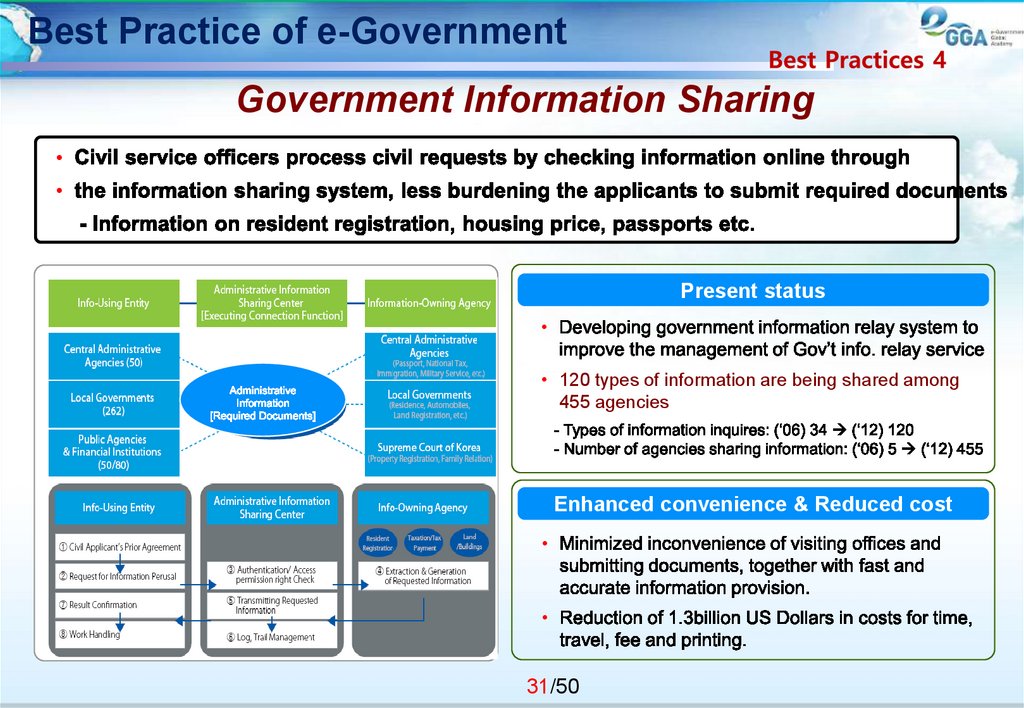


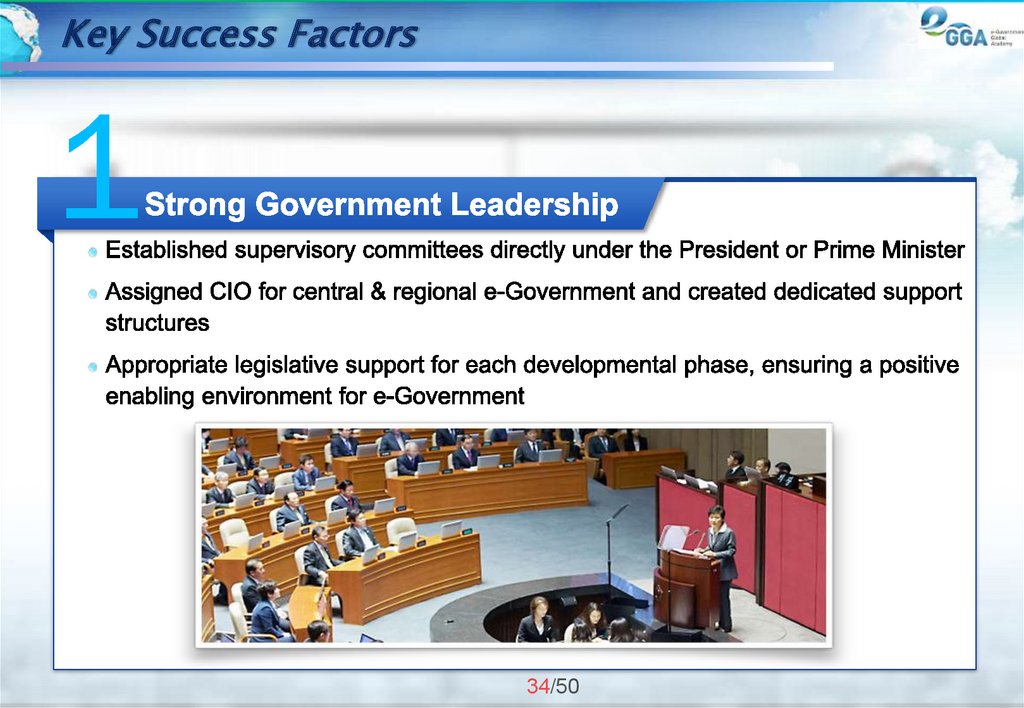







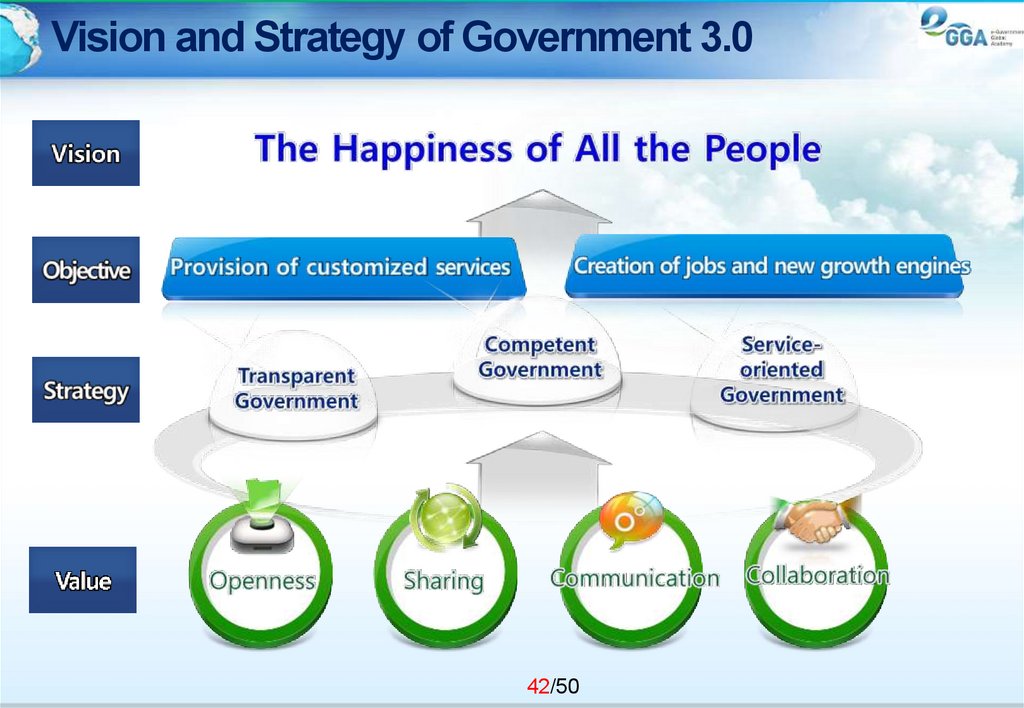


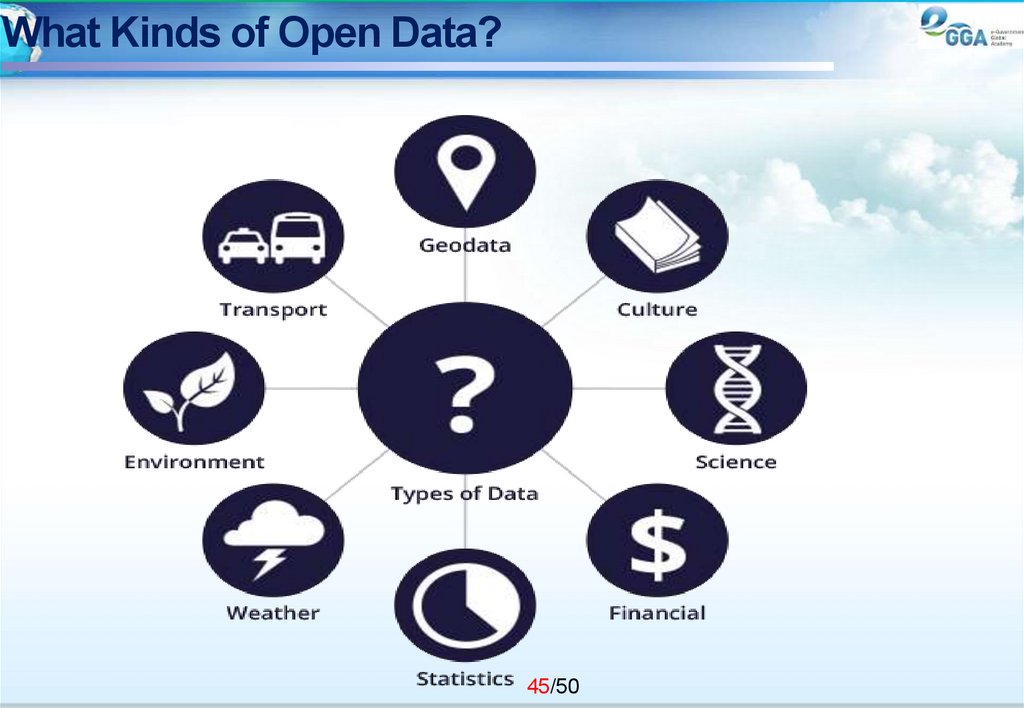


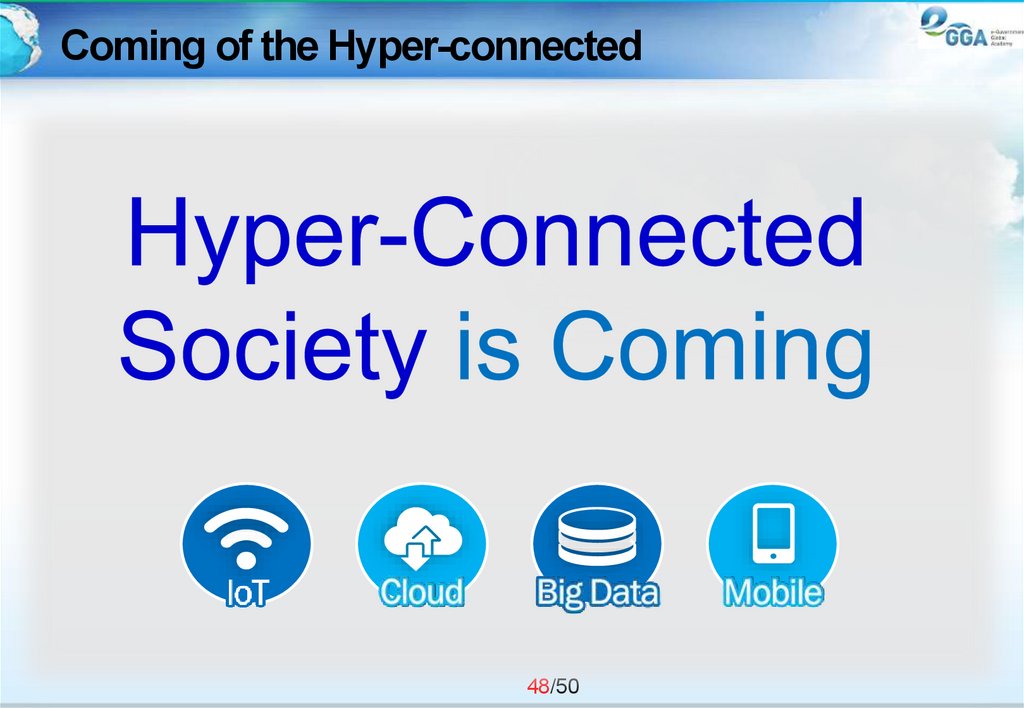


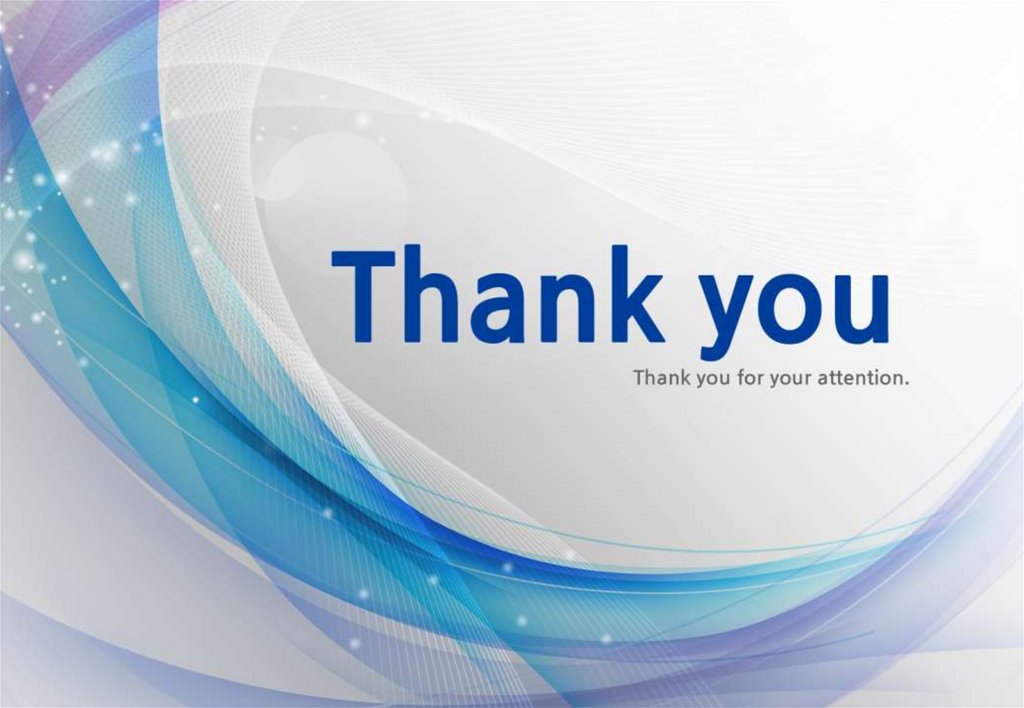
 informatics
informatics








